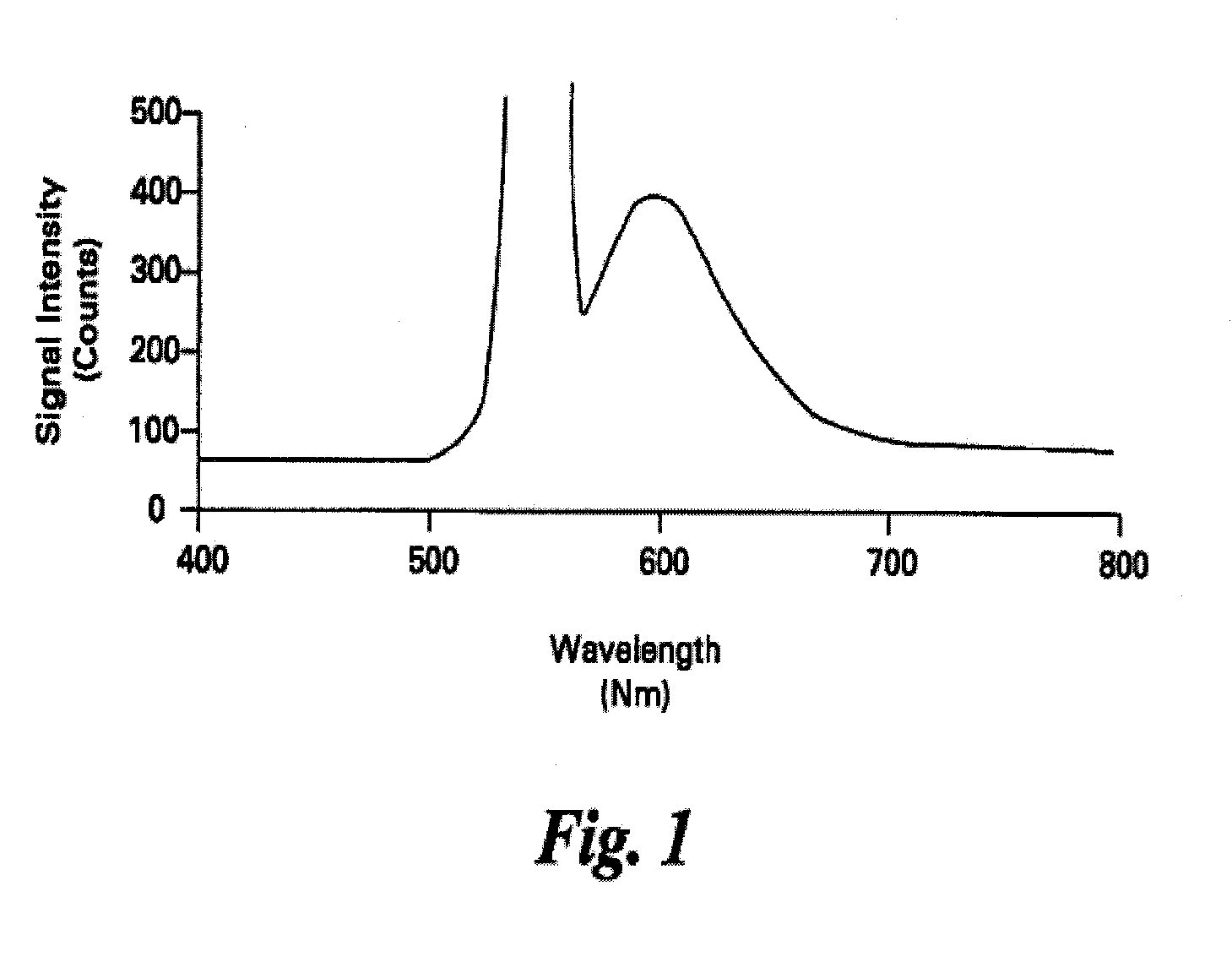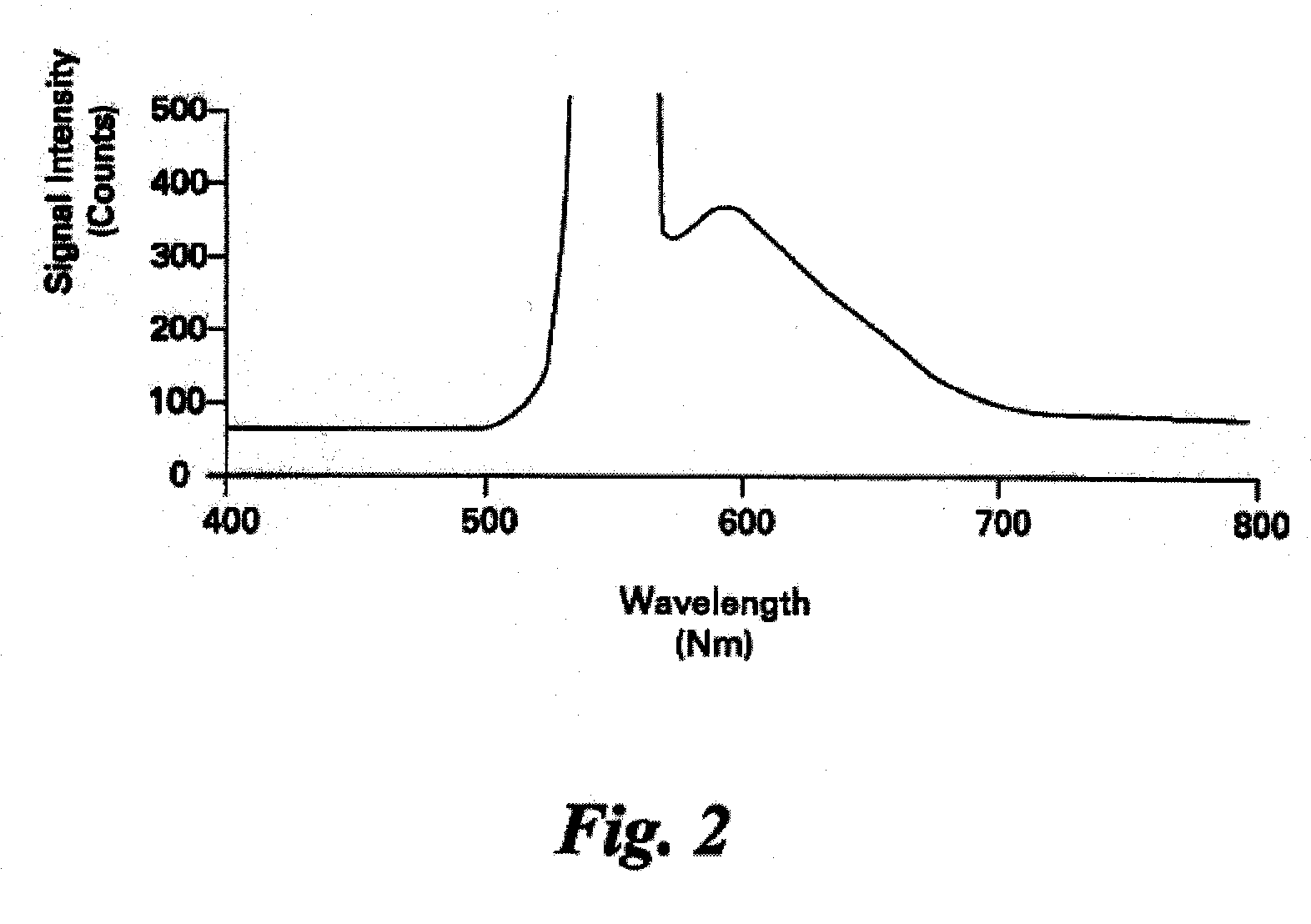Tagging Material for Polymers, Methods, and Articles Made Thereby
- Summary
- Abstract
- Description
- Claims
- Application Information
AI Technical Summary
Benefits of technology
Problems solved by technology
Method used
Image
Examples
Embodiment Construction
[0011] The present invention relates to spectroscopic tags incorporated into polymers. Spectroscopic tags include at least one organic fluorophore, at least one inorganic fluorophore, at least one organometallic fluorophore, at least one semiconducting luminescent nanoparticle, or combinations thereof. Spectroscopic tags make it possible to determine the thermal history and degradation of a polymer. In addition, the tagging materials used in the present invention are insensitive to polymer additives and to chemical and physical aging of the polymer.
[0012] These tagging materials are selected from classes of dyes that exhibit high robustness against ambient environmental conditions and temperature stability of at least about 350° C., preferably at least about 375° C., and more preferably at least about 400° C. Typically, the tagging materials have a temperature stability for a time period less than about 10 minutes and preferably, less than about 1 minute, and more preferably, less ...
PUM
 Login to View More
Login to View More Abstract
Description
Claims
Application Information
 Login to View More
Login to View More - R&D
- Intellectual Property
- Life Sciences
- Materials
- Tech Scout
- Unparalleled Data Quality
- Higher Quality Content
- 60% Fewer Hallucinations
Browse by: Latest US Patents, China's latest patents, Technical Efficacy Thesaurus, Application Domain, Technology Topic, Popular Technical Reports.
© 2025 PatSnap. All rights reserved.Legal|Privacy policy|Modern Slavery Act Transparency Statement|Sitemap|About US| Contact US: help@patsnap.com



